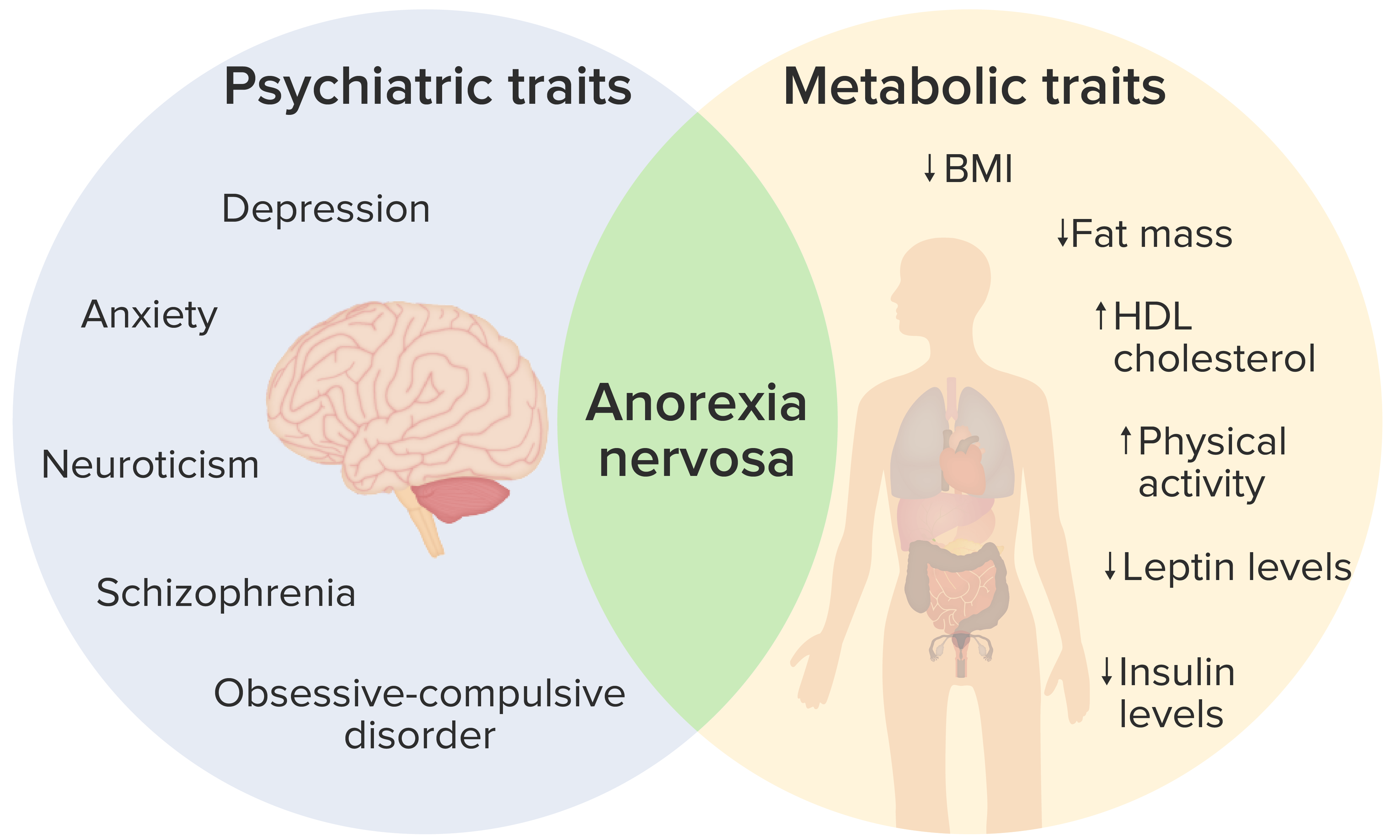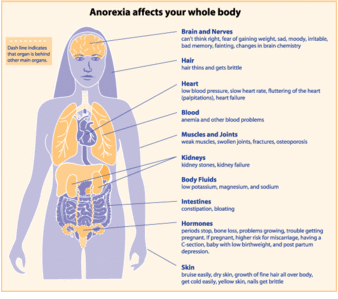Mood swings and social withdrawal are other common features. Concerns about eating in public need for control ex.

The Key Features Of Anorexia Nervosa And Bulimia Nervosa Download Table
Regarding the somatic features of patients with AN total protein serum albumin serum chloride and serum calcium levels were significantly lower among patients with a longer illness duration.

. Binge-eatingpurging type- The person has had ongoing episodes of binge eating eating more than normal in one sitting or purging behaviors vomiting or the misuse of laxatives diuretics or enemas to cleanse the body of food eaten. Studies suggest that about one percent of adolescent females are affected by anorexia according to Anorexia Nervosa and Related. Severe weight loss can set off a series of other serious health risks that can become life threatening.
He has been unable to resist these urges and this has. The typical characteristics of a person with anorexia nervosa include. Research on longitudinal outcomes is needed to clarify SEED in the same sample.
Patients commonly show symptoms of depression along with obsessive-compulsive personality traits. People with anorexia often have common traits including. Low self-esteem feeling worthless or like youre not good enough.
Another common symptom of anorexia is obsessive thinking about food and weight. The appropriate setting depends on the assessment of risk and the patients wishes but in general the person with. The amount of food eaten is larger than most individuals would eat under similar circumstances.
About 1 percent of all American women will develop anorexia and 15 percent will develop bulimia according to the National Association of Anorexia Nervosa and Associated Disorders ANAD. Characteristics of a person with anorexia nervosa. Sufferers of anorexia see themselves as overweight when in fact they are extremely underweight even emaciated.
Excessive eating occurs in a discrete period usually. Counting calories inflexible thinking rigid thinking feeling ineffective limited social spontaneity overly restrained initiative and emotional expression impulsive behaviors binge type. Anorexia nervosa is an eating disorder that causes a person to restrict their food intake.
Food restriction is only one aspect of the practices used to lose weight. However when the person far from presenting a lack of appetite controls the intake to be thinner is when we speak of anorexia nervosa. An- ἀν- prefix denoting negation and orexis ὄρεξις appetite translating literally to a loss of appetite.
According to another study from Current Psychiatry Reports when younger women 15-19 years of age are included the. Anorexia nervosa often referred to simply as anorexia is an eating disorder characterized by low weight food restriction body image disturbance fear of gaining weight and an overpowering desire to be thin. Their weight and body image is directly tied to their self-worth and they experience intense fear and anxiety about gaining any weight as well as not losing enough weight.
There is an increased lack of sexual. The adjective nervosa indicating. Dual X-ray absorptiometry DEXA is the most commonly-used modality and measures the bone mineral content for a given cross sectional area of bone.
Anorexia associated with-mood disorders-anxiety disorder. Weight loss is the most common health risk associated with anorexia nervosa. Restrictive type anorexia and purging type anorexia.
A common feature of anorexia is an extreme fear of being overweight even if you are underweight. Various modalities exist for assessment of bone density. Patients with anorexia nervosa very commonly have impaired bone structure and reduced bone strength.
Miss Mann is ready. A disease characterized by refusal to maintain a minimally normal body weight intense fear of gaining weight body image distortion and amenorrhea. People with anorexia also have the physical capacity to tolerate extreme self imposed weight loss.
Someone suffering from anorexia may experience nausea stomach pain bloating vomiting constipation and dizziness. What are some other associated features of eating disorders. There are two types of anorexia with different symptoms.
Anorexia an-o-REK-see-uh nervosa often simply called anorexia is an eating disorder characterized by an abnormally low body weight an intense fear of gaining weight and a distorted perception of weight. The treatment plan for a patient with anorexia nervosa needs to consider the appropriate service setting and the psychological and physical management but unfortunately the research evidence base to guide decision making is very limited. OCPD-Substance abuse mainly for binge-purge type-Kleptomania binge-purge type.
Himself up against unsuspecting women whom he rides with on the. Patients with anorexia nervosa tend to perceive their families as more rigid less cohesive and as having poorer communication many of the parents of patients with eating disorders have long-standing preoccupations regarding the desirability of thinness dieting and good physical appearance 13 of patients reported family dysfunctions. They might try to avoid eating altogether eat very small portions andor cut out certain foods and eat only a select few.
Body temperature less than 35-degree Celcius. According to the Center for Behavioral Health Statistics and Quality anorexia is less common among adults over 18 than bulimia and binge eating disorder BED occurring in less than 01 percent of the adult population. What Is Anorexia Nervosa.
The feature common to both anorexia nervosa and bulimia nervosa is a refusal to maintain normal body weight b fear of gaining weight c purging to. People with anorexia place a high value on controlling their weight and shape using extreme efforts that tend to signific. Anorexia nervosa commonly referred to as anorexia is one of the most common eating disorders.
A care plan is developed for this patient which is very detailed and includes many psychological aspects. Anorexia is a term of Greek origin. The core psychological feature of anorexia nervosa is the extreme overvaluation of shape and weight.
A body-mass index score of 200 or lower. Many people with anorexia use overexercise and overactivity to burn calories. Fred has been experiencing intense urges to rub.
Anorexia means literally lack of appetite and it is a symptom that can occur along with other diseases such as a cold. Losing weight can start to feel like a sense of achievement or a way to feel a sense of worth. People who are diagnosed with anorexia often have symptoms of other conditions as well including depression anxiety hyperactivity perfectionism and impulsivity 9.
List seven 7 psychological aspects you should consider when developing the care plan. Low body mass index. An episode of eating marked by the following features.

Microbial Influences In Anorexia Nervosa An Brain And Intestine Download Scientific Diagram

Treating Patients With Anorexia Nervosa Dimensions Of Dental Hygiene


0 Comments